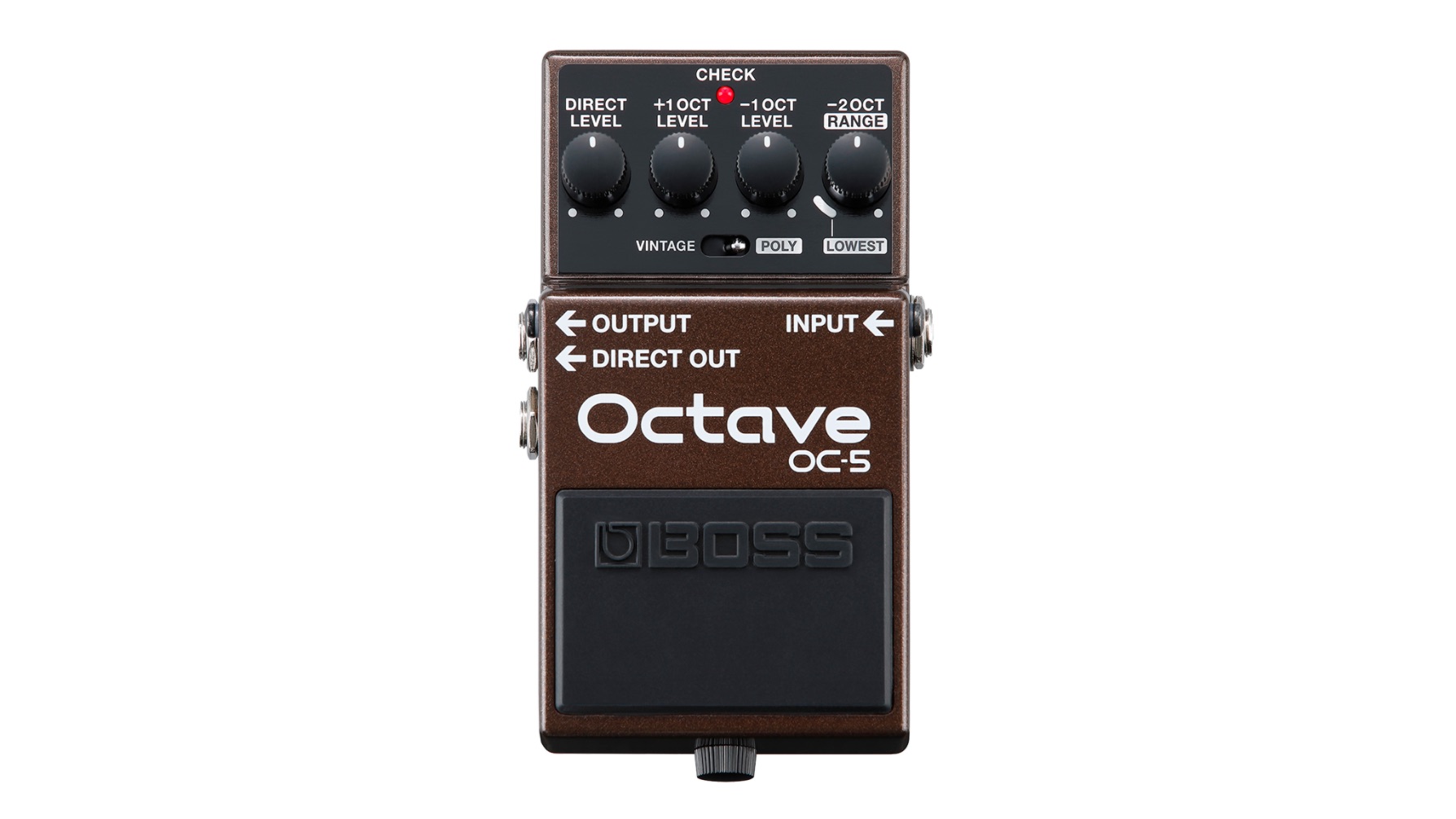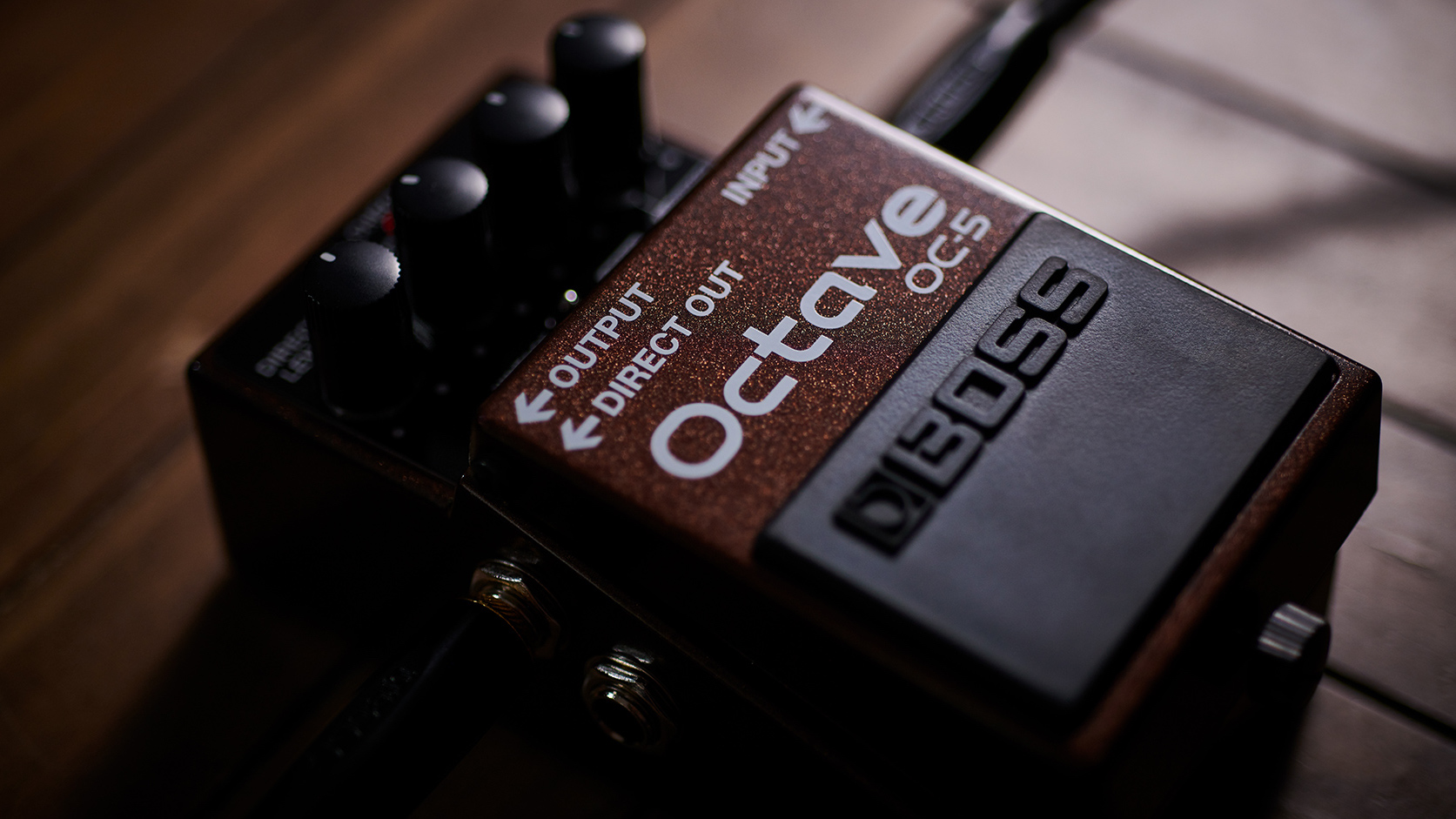Guitar World Verdict
For too long, the OC series has been the unsung hero in the Boss catalogue. For compact octave effects, it's unbeatable. It handles the conventional octave functions with ease, and in poly mode, there's some quasi-synth textures to discover.
Pros
- +
Very low latency.
- +
Poly and Vintage modes make it very versatile.
- +
Typically solid Boss build.
- +
Compact form.
Cons
- -
Nothing.
You can trust Guitar World
Considering that the Boss OC-2 Octave – with its straightforward sub-octave pitch-shifting – has been the perennial “thickening agent” for so many guitarists and bassists since its introduction in 1982, it’s somewhat surprising that this glittery espresso-colored stompbox doesn’t get more of the love and recognition it deserves.
No matter, because Boss followed up much later with the OC-3 Super Octave, which introduced polyphonic octave effects, turning this bottom-end box into a broader innovation.
Well, this time around, I believe many players will take notice of Boss’s brand-new OC-5 Octave, which expands upon those legendary predecessors with improved tracking performance and a wider range of polyphonic capability, all while still preserving the classic sound of the original OC-2 pedal.

Features
Housed in Boss’s familiar pedal enclosure, the OC-5 features dedicated controls for Direct Level (direct signal volume), +1 OCT level (one octave above volume), -1 OCT level (one octave below volume) and -2OCT/RANGE (operation is tied to mode switch; more on that below).
It’s curious that the OC-5 isn’t a Waza Craft pedal, because having the mini toggle Mode Selector that switches between Vintage and Poly modes surely makes it appear as such. Selecting Vintage mode engages the classic monophonic bass sound of the OC-2, where the -2OCT/RANGE knob adjusts the two octaves below volume, and unlike the original OC-2, you now have the option to blend in an octave up with the (+1 OCT) control.
In Poly mode, the -2OCT/RANGE knob variably adjusts the frequency bandwidth from low to high and limits the octave effect to the lower strings, allowing for octave bass lines to sit harmoniously within normal chording. You can also dial the -2OCT/RANGE knob to the LOWEST setting where only the low octave registers the bottom note in a chord.
In addition, the OC-5 features a Guitar/Bass switch optimized for either instrument, a high-quality buffered bypass, input and output jacks along with a Direct Out (dry signal) jack and 9V battery or 9V DC operation.
All the latest guitar news, interviews, lessons, reviews, deals and more, direct to your inbox!
Performance
As always, Boss not only improves but exceeds expectations with this new iteration of their classic octave pedal. Gone is the very slight sluggishness of the OC-2 in favor of the OC-5’s stellar tracking and near latency-free performance that flat-out feels great for accurate playing.
The OC-5 is also better at subduing the momentary artefacts that could sporadically bounce to an upper harmonic octave or something else entirely, and emerge only if you hold a couple notes together – one after another – for the musical glitch to pop up. But I’m one of those players that finds this musically endearing.
Set to Vintage mode, the OC-5 can play a vital role for adding a subterranean layer of bottom end or bellowing growl to basslines, and guitarists will find it an indispensable tool for providing massive rumble to power chords.
In Poly mode, the OC-5’s stacked octave bass tones cleanly isolate the low root notes to accompany your chording for extra density, and the upper octave control is good for adding warbly chime to the upper registers or a hint of 12-string shimmer.
Blending all three octave voices in Poly mode can fetch super-plump organ textures and synth-like impressions as well. In most cases I find them useless, but the OC-5 could benefit from an included illustration of sample settings for guitarists new to the pedal, but this is a minor fuss for me.
It’s also a matter of application, but I encourage you to play around with the Bass/Guitar switch. I found the OC-5 sounds incredibly organic in its bass emulation when set to “Bass” if you’re playing guitar, but the difference is immediately audible when set back to “Guitar” in how the low- and high-end frequencies become more focused for clarity.
All together, and for its simple versatility, the OC-5 is an essential pedal for any player willing to take their tone deeper.
Specs
- PRICE: $129 / £119
- TYPE: Octave pedal
- MADE IN: Taiwan
- CONTROLS: Direct Level, +1 Octave Level, -1 Octave Level, -2 Octave Range, Vintage/Poly switch
- BYPASS: Buffered
- POWER: 9V battery or DC power supply (not included)
- CONTACT: Boss
Paul Riario has been the tech/gear editor and online video presence for Guitar World for over 25 years. Paul is one of the few gear editors who has actually played and owned nearly all the original gear that most guitarists wax poetically about, and has survived this long by knowing every useless musical tidbit of classic rock, new wave, hair metal, grunge, and alternative genres. When Paul is not riding his road bike at any given moment, he remains a working musician, playing in two bands called SuperTrans Am and Radio Nashville.




